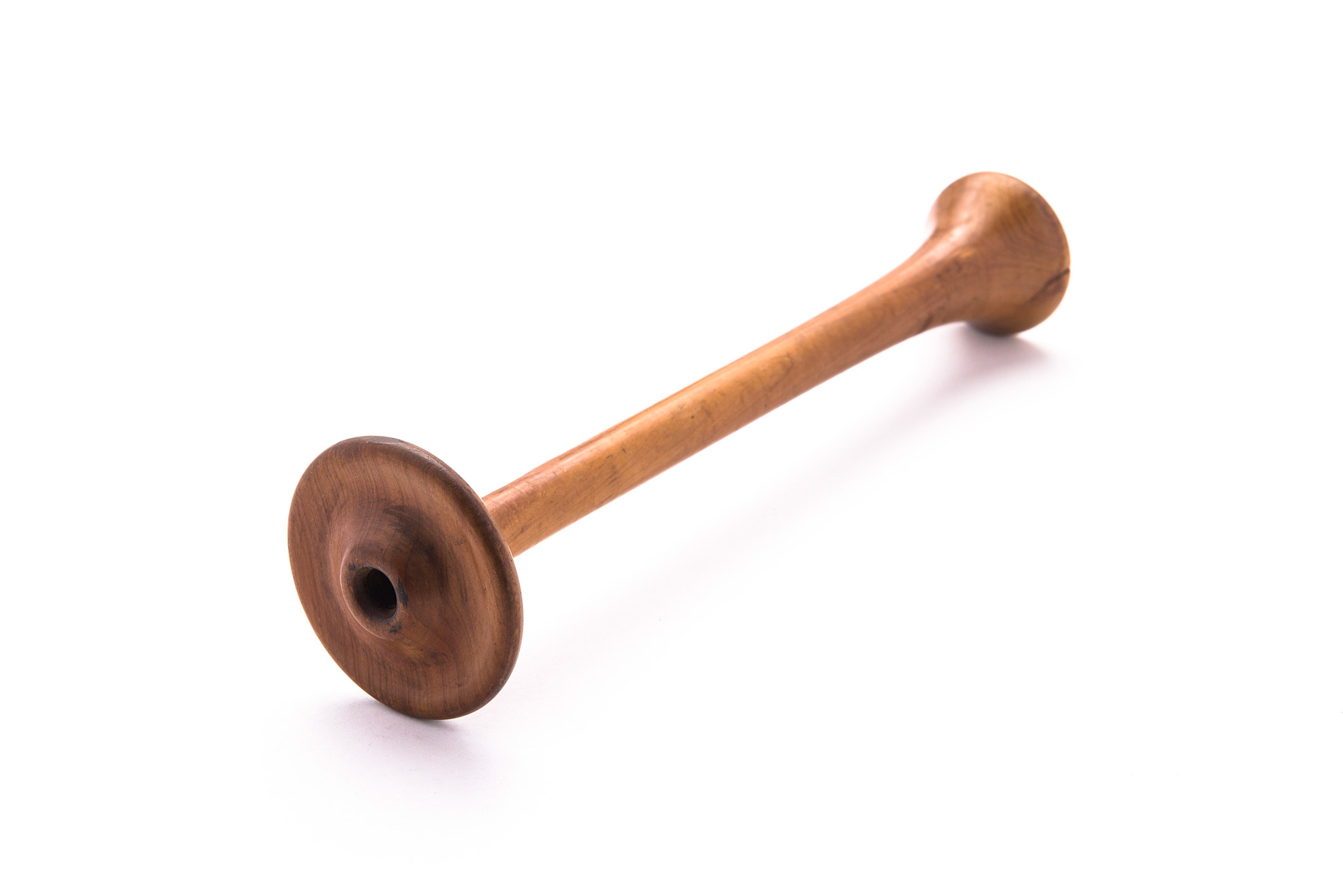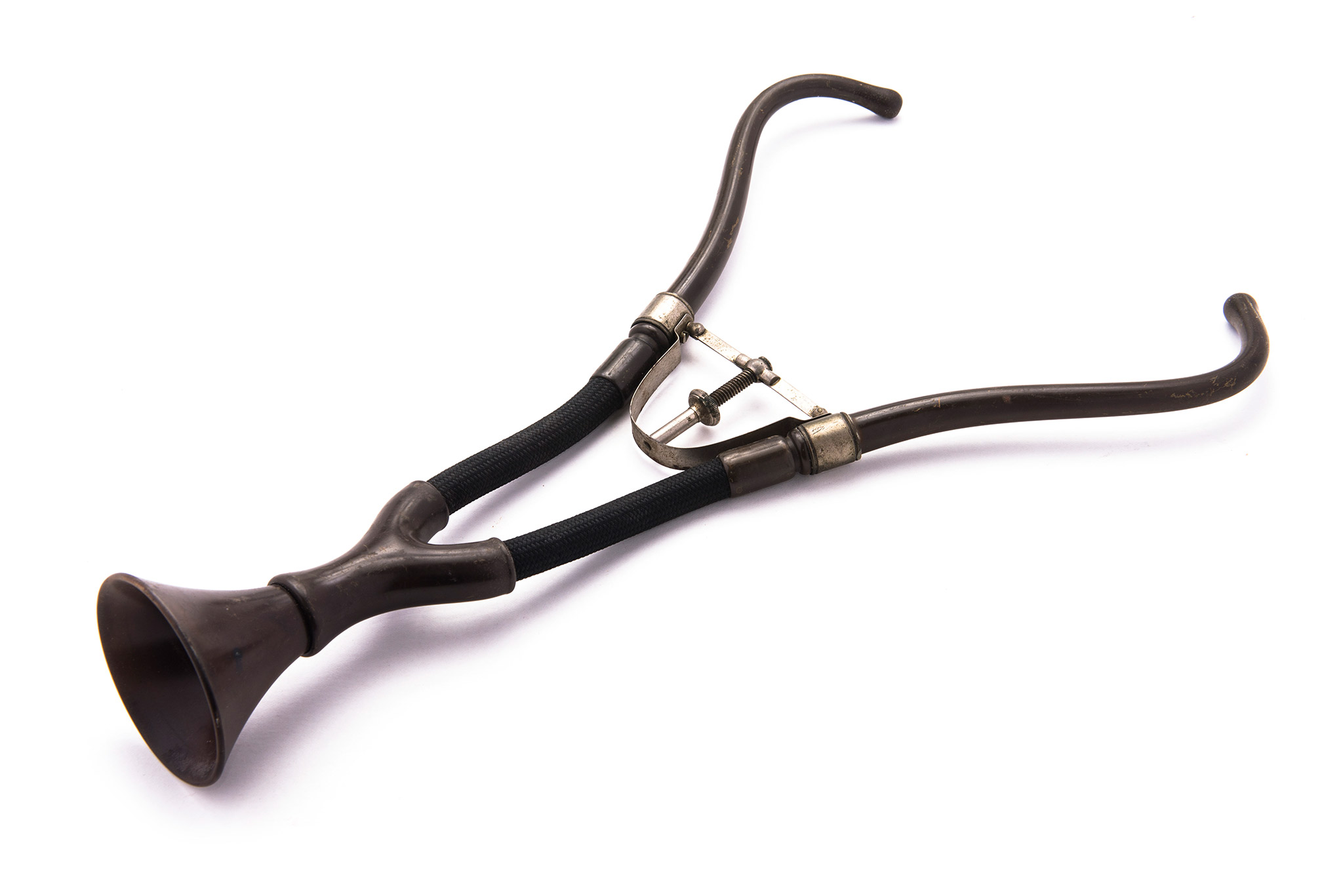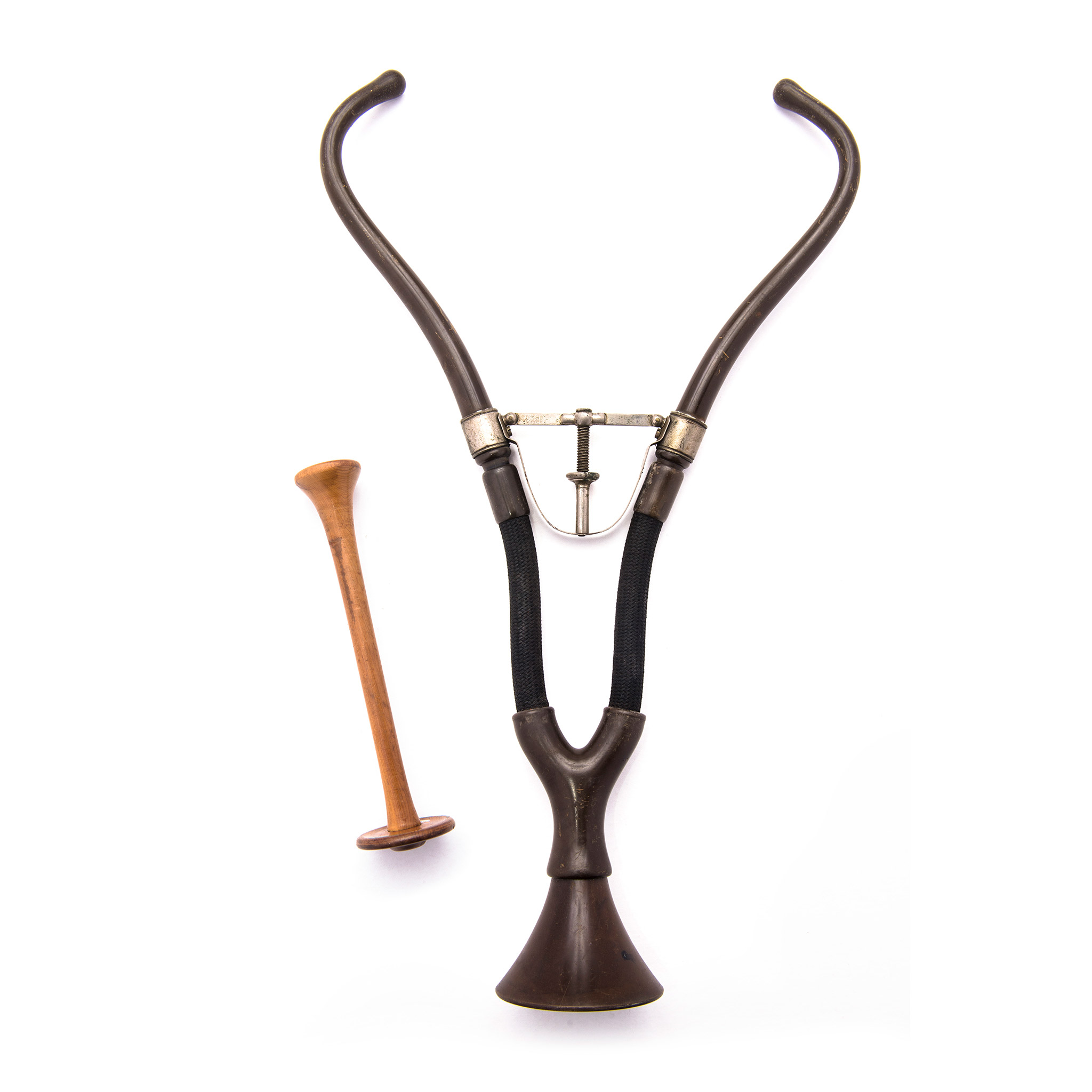Storeroom Stories: Sound of Sickness
Feeling a bit woozy? According to the Centers for Disease Control and Prevention, this year’s flu season is of “high severity.” It’s therefore safe to assume that more than a few of our friends and neighbors have had some form of a stethoscope stuck to their chest within the last few months.
Although physicians have for centuries understood the heart and lungs (and the sounds that each makes) to be quintessential details in evaluating a person’s health, the first stethoscopes do not appear in America until the early nineteenth century. Before then, doctors practiced what was called “immediate auscultation,” a scientific-sounding technique to be sure, but one that, in reality, was simply sticking one’s ear up against a patient’s chest.
 This procedure was rather up-close and personal – especially when male physicians examined female patients. Consequently, in 1816, a French physician produced the first stethoscope (a combination of the Greek stethos for chest and skopein for exploration) from a tube of rolled paper. The tool proved to be a major success. Not only did it “properly separate” doctor and patient, but also greatly amplified the sound of a person’s internal organs by funneling them directly to the examiner’s ear.
This procedure was rather up-close and personal – especially when male physicians examined female patients. Consequently, in 1816, a French physician produced the first stethoscope (a combination of the Greek stethos for chest and skopein for exploration) from a tube of rolled paper. The tool proved to be a major success. Not only did it “properly separate” doctor and patient, but also greatly amplified the sound of a person’s internal organs by funneling them directly to the examiner’s ear.
 Expectedly, the stethoscope underwent some notable changes over time. Wooden cylinders soon replaced paper rolls. By the 1850s stethoscopes featured flexible tubes and two earpieces (bi-aural). In the twentieth century, improvements to acoustics and the addition of electronics expanded the use of stethoscopes to almost all divisions of modern medicine.
Expectedly, the stethoscope underwent some notable changes over time. Wooden cylinders soon replaced paper rolls. By the 1850s stethoscopes featured flexible tubes and two earpieces (bi-aural). In the twentieth century, improvements to acoustics and the addition of electronics expanded the use of stethoscopes to almost all divisions of modern medicine.


